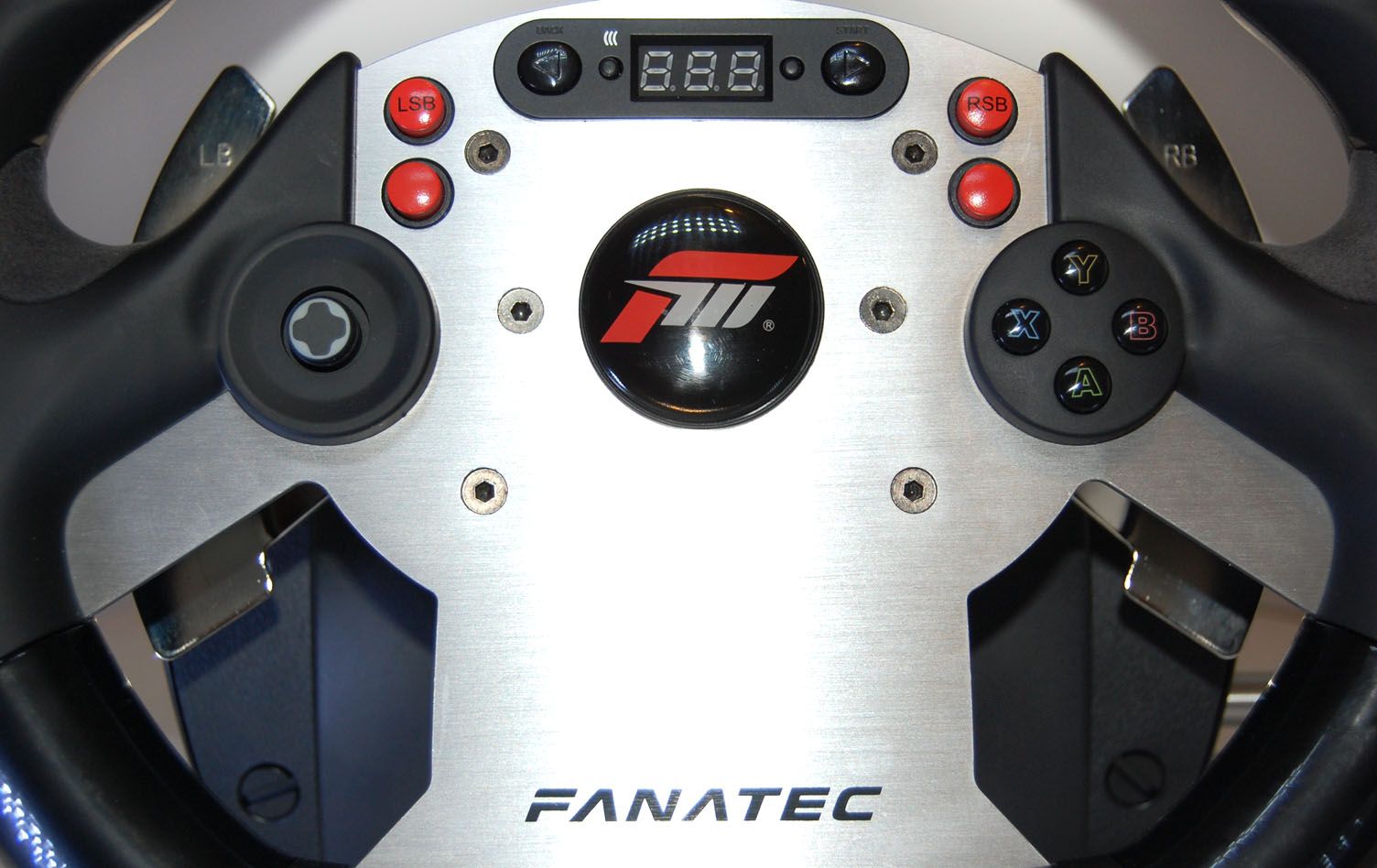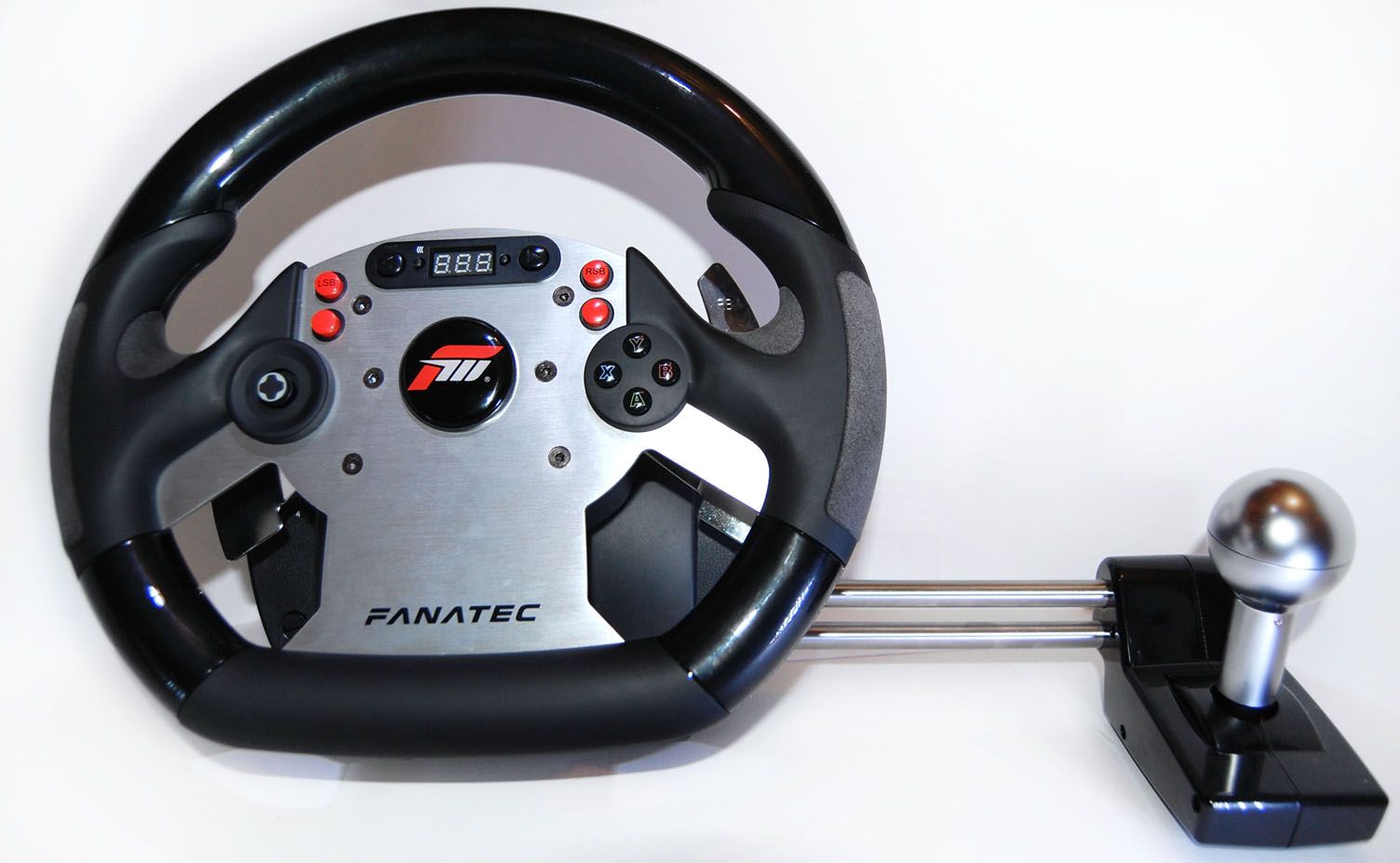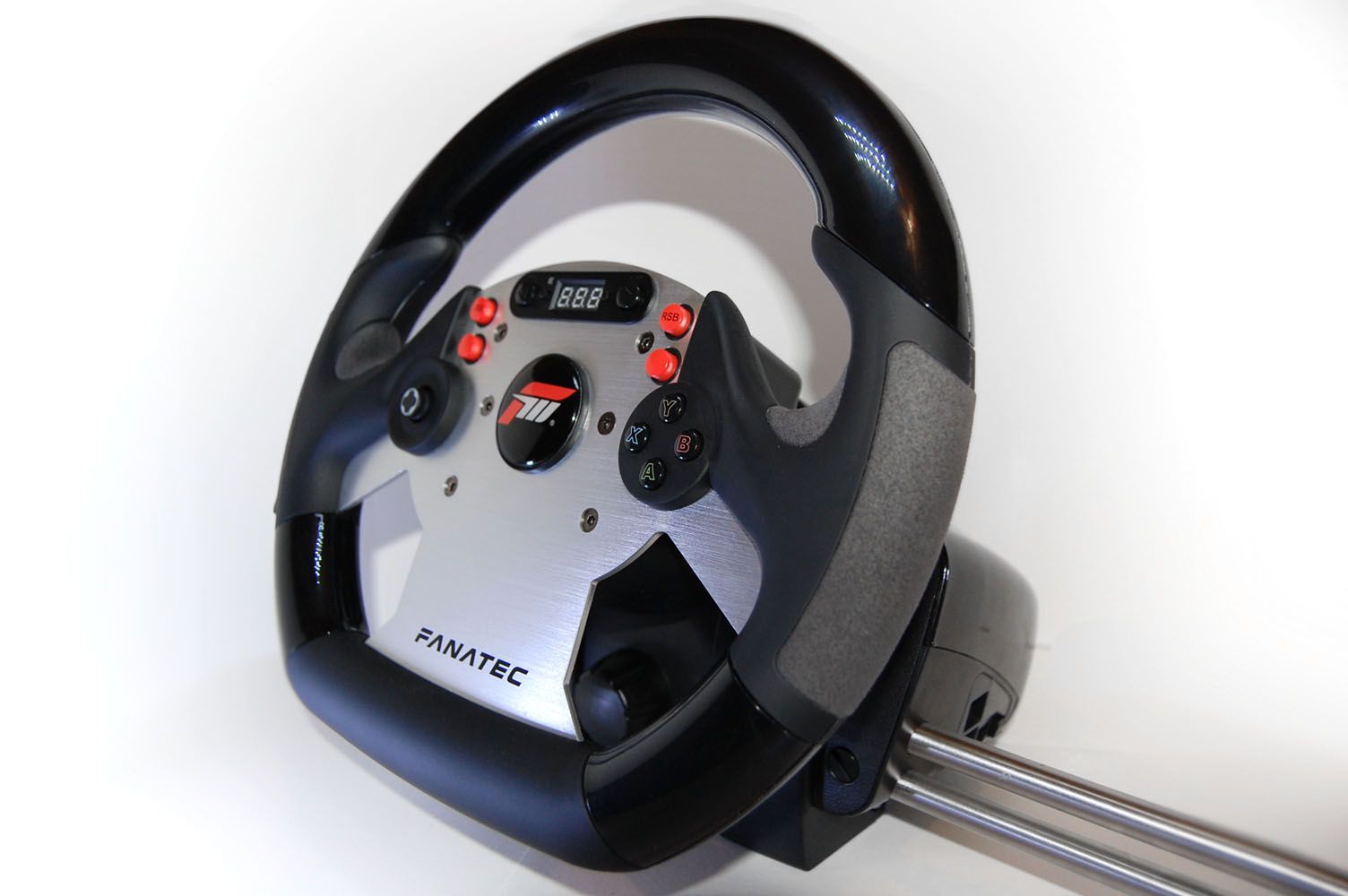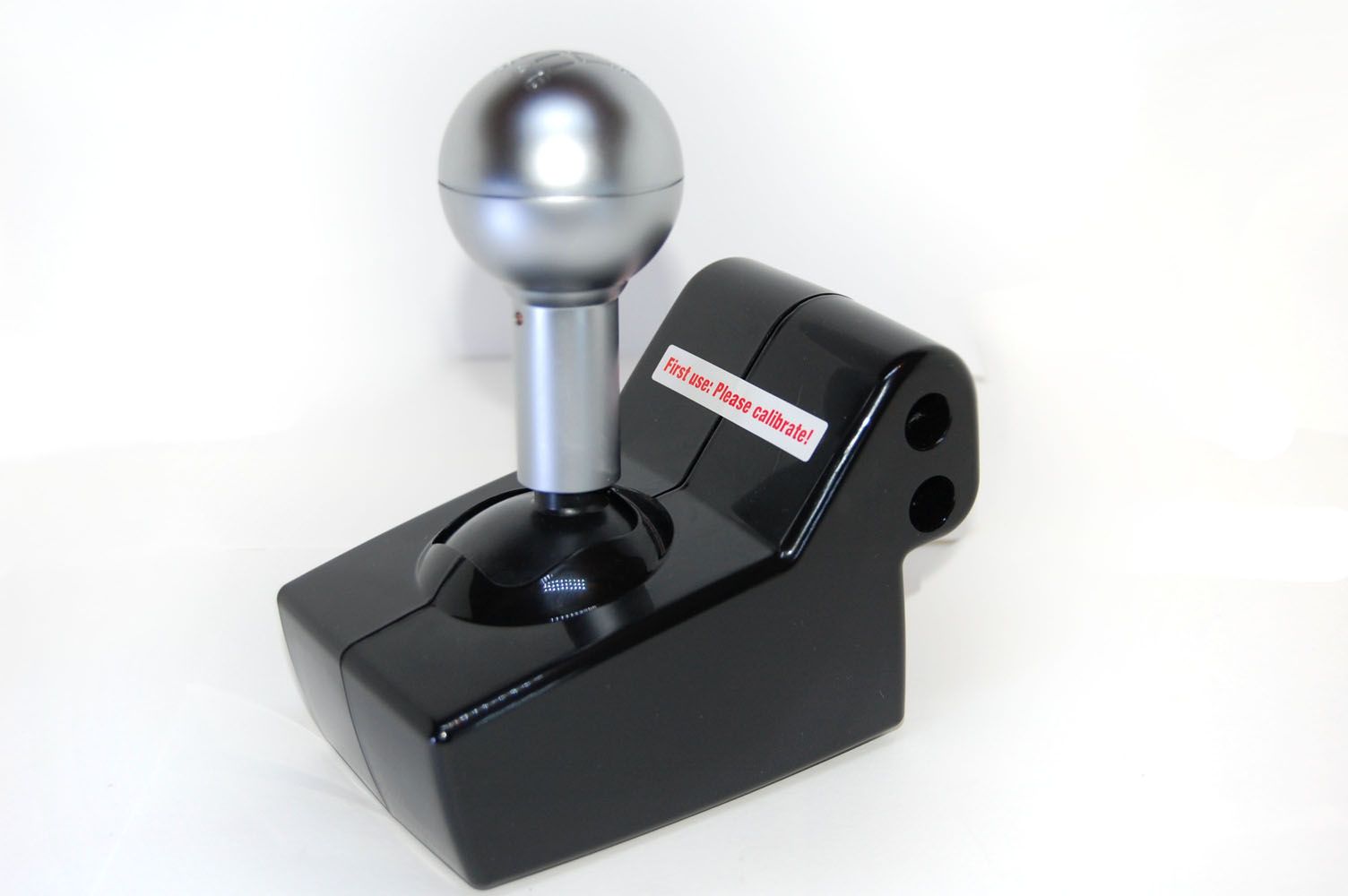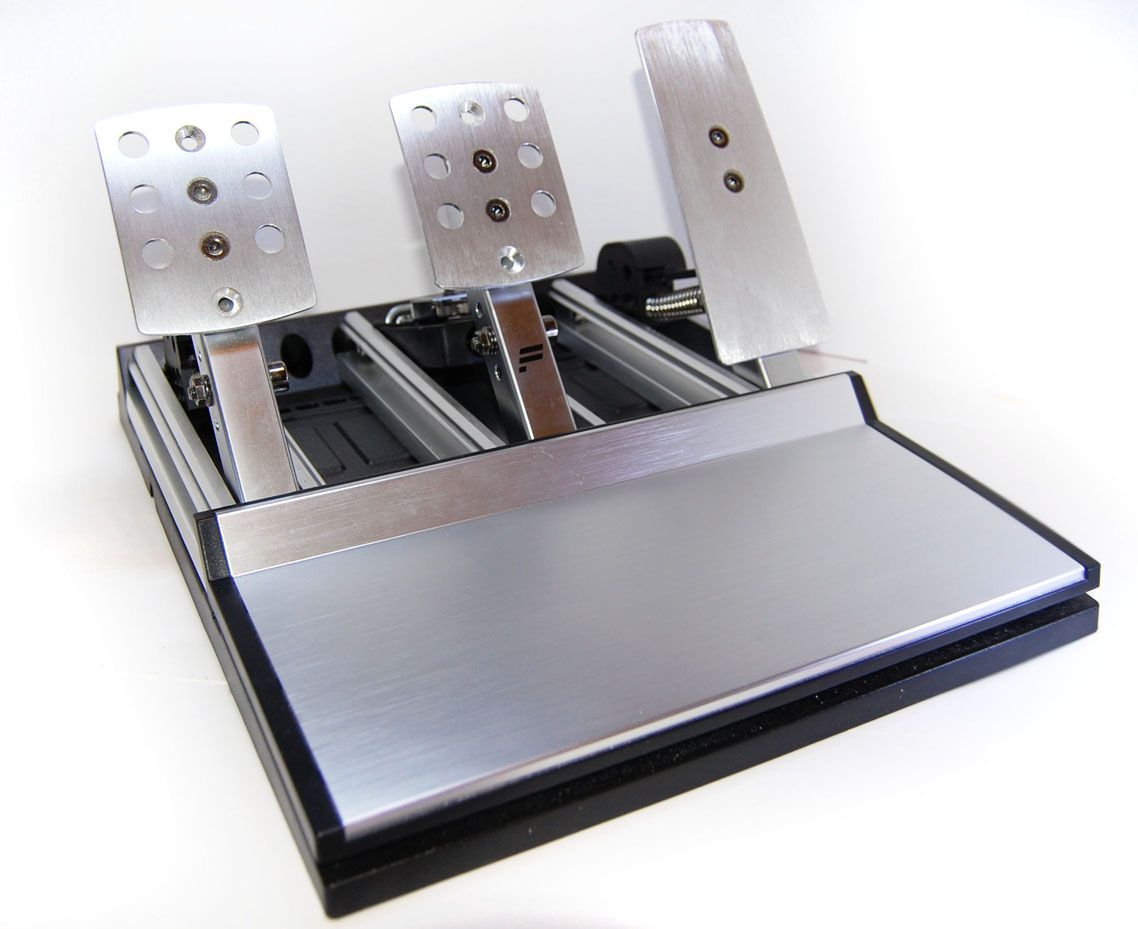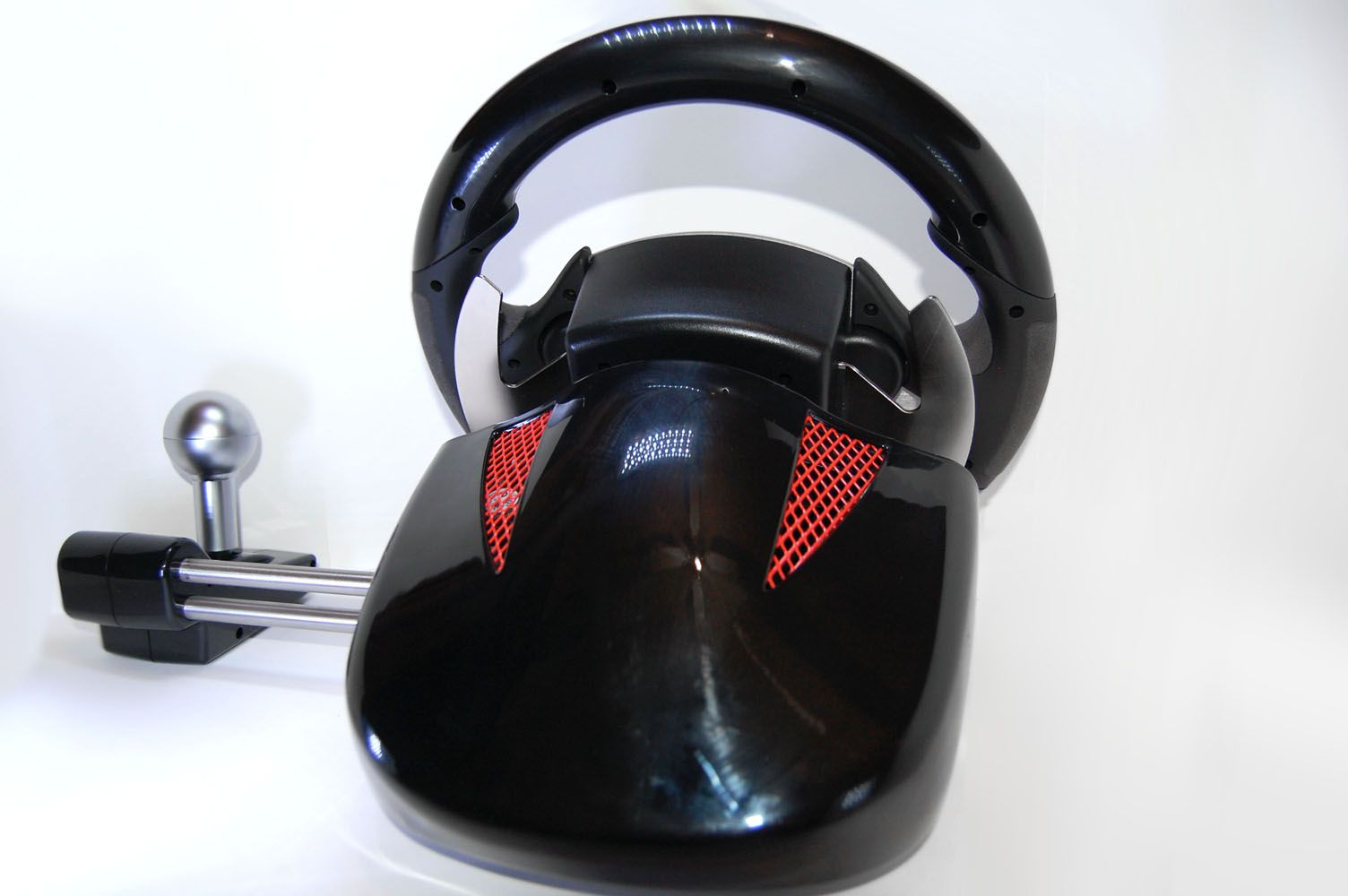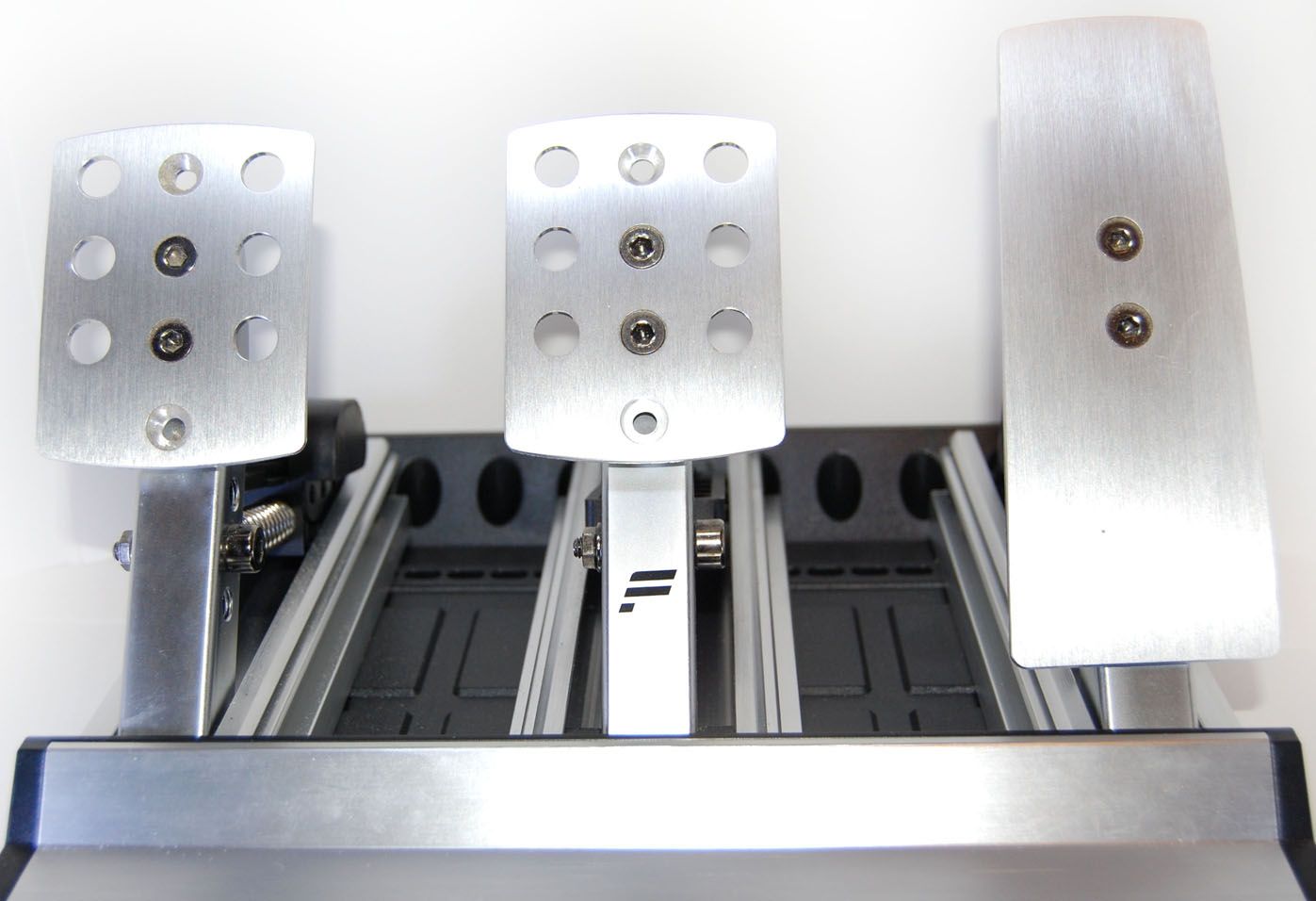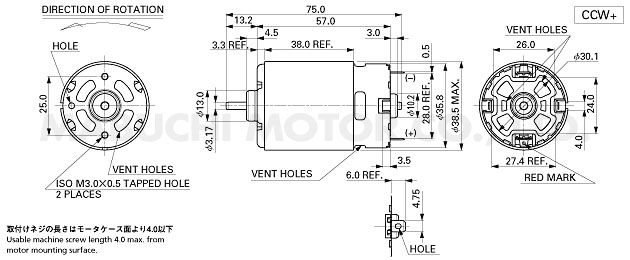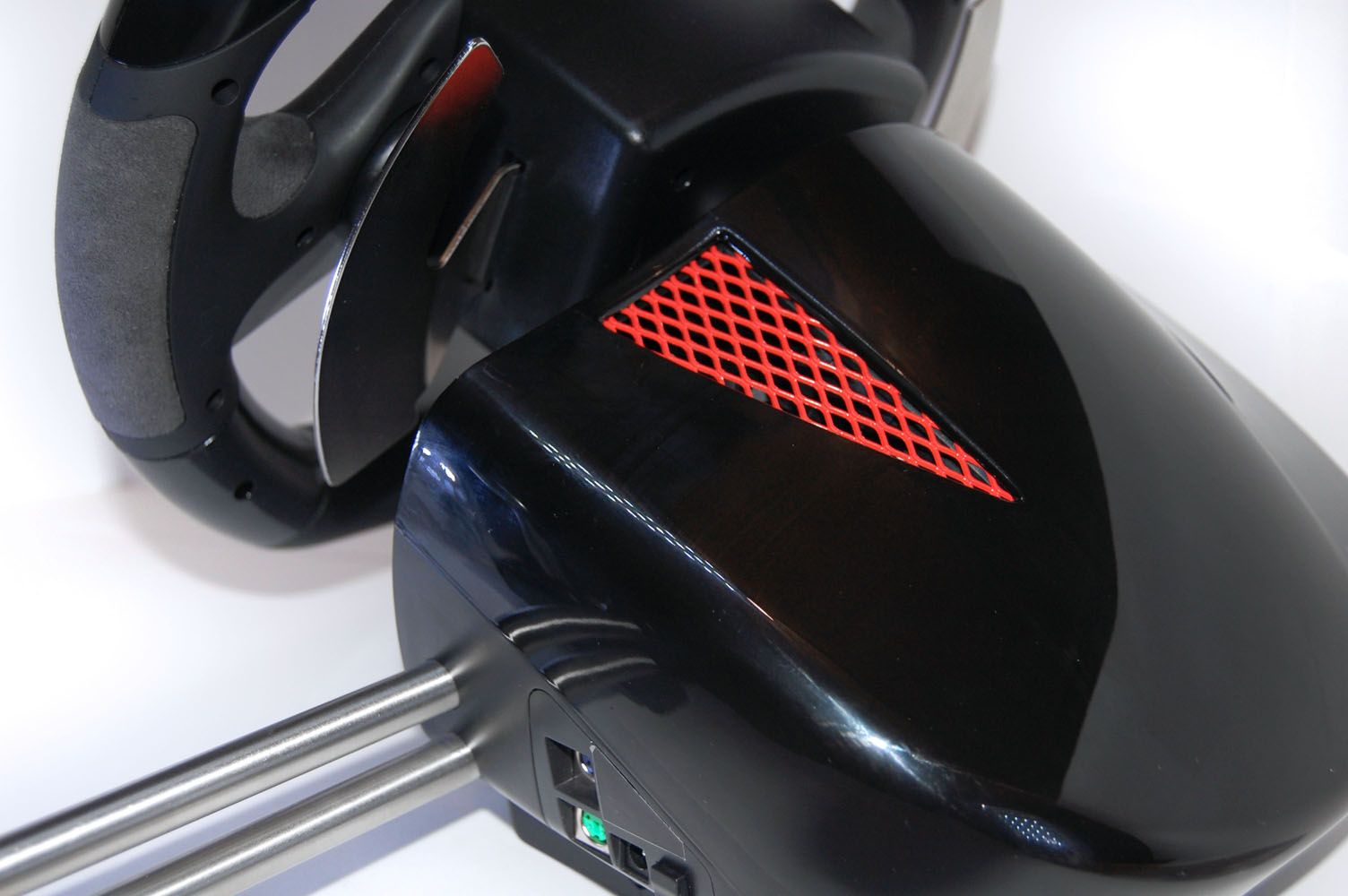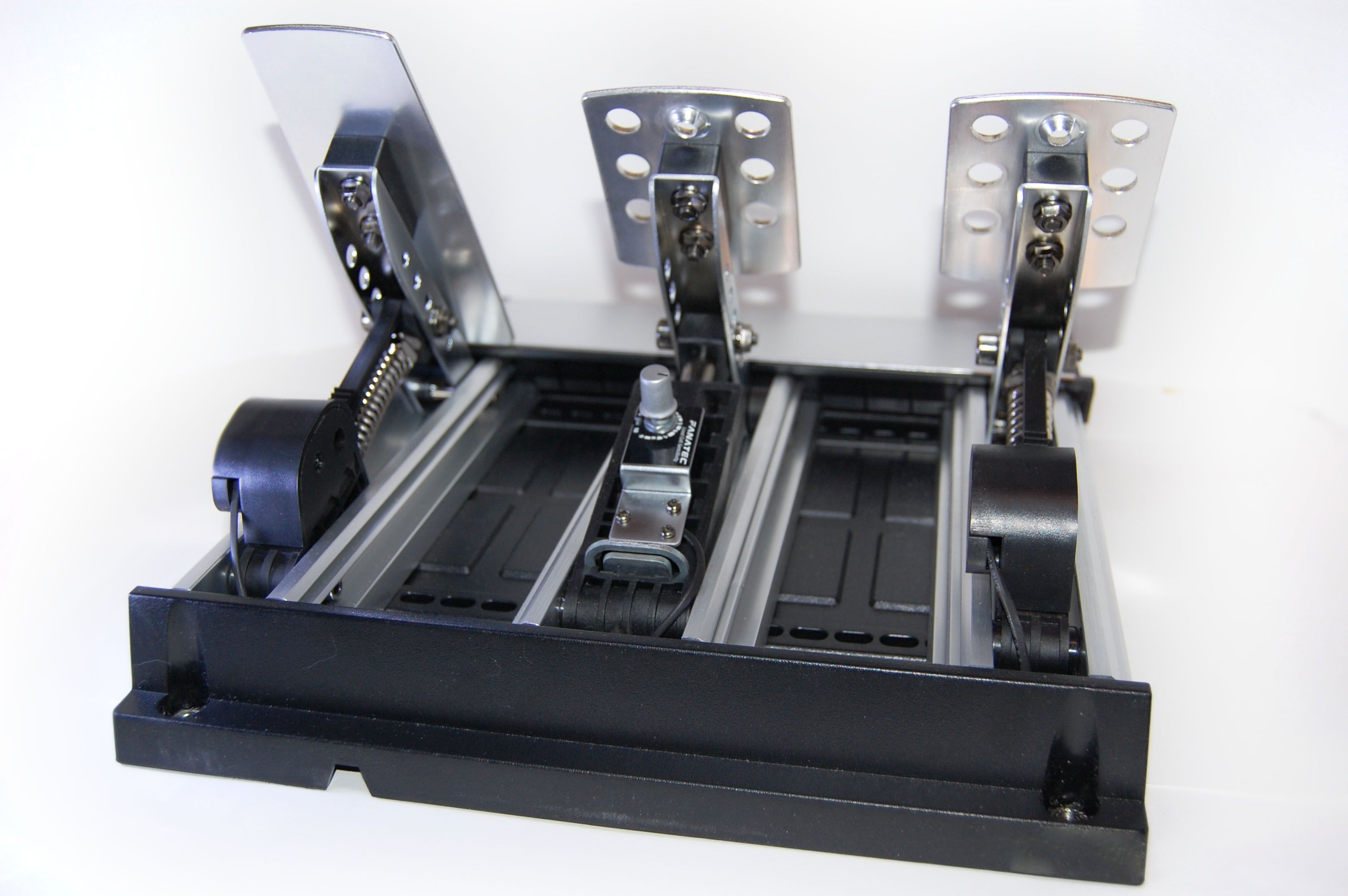Fanatec is a brand dear to the heart of the many dedicated fans of the Forza Motorsport franchise as their Porsche 911 wheels (the discontinued Turbo S model first and then the GT2) have been for a long time the only high-end wheels compatible with the Xbox 360, providing a level of precision and response on Microsoft's console that no other racing peripheral managed to rival and that simply blew out of the water the official Microsoft wireless wheel.
That's why it was rather natural for Fanatec to get the license to produce the official wheel for Forza Motorsport 4 alongside its accessories, giving birth to the CSR Wheel, the CSR Elite pedals and the CSR shifters. An Elite version of the wheel and a standard version of the pedals are in production but aren't yet available for purchase.
Let's get a misconception out of the way immediately. While the CSR is the official Forza Motorsport 4 wheel, its compatibility isn't limited to the Xbox 360. You can use it with the same results and features on on the PC and the PS3. This makes it, alongside with its older Fanatec sister Porsche 911 GT2, the only wheel available on the market to cover all platforms (Yes, it doesn't support the Wii, but if you race on the Wii... well... let's just drop it). This is, in itself, a massive advantage this wheel has over all competing ones, as having to own different peripherals for different platforms is definitely inconvenient, especially since the whole equipment tends to be rather bulky and pricey, if you're looking for quality.
The only noticeable difference in using the wheel with different platforms is that it connects in wireless mode only with the Xbox 360, while interfacing with PC and PS3 is done via an USB cord.
Thanks to the multiplatform nature of the wheel I was able to test it on Forza Motorsport 4, Gran Turismo 5, F1 2011 (on PC) and iRacing, creating a nice and varied test benchmark of simulators and semi-simulators to see how the wheel performed in every possible condition and with every possible kind of car. If you read my F1 2011 review, you probably already know that I was very pleased by how the CSR performed with it, but today I'm going to go much deeper in the capabilities and features of the set.
The first thing that you will notice when unboxing the wheel are its looks. The CSR is big and imposing, with its machined aluminium center plate and the racey design of the rim. The rim itself is made mostly of hard plastic, with the 3 and 9 points wrapped in rubber and Alcantara, and the flat six point covered in rubber only. Together with the metal plate and the six big screws that hold it in place, this use of four different materials in a carefully designed pattern gives the wheel an essential but composite and aggressive look that really resembles that of a real racing wheel.
While the elegant design of the Porsche 911 GT2 wheel seems to be made for a posh Sunday driver and his posh car with its posh engine built in the wrong place, the looks of the CSR cater to racers (even if virtual) with speed in their blood, that love to hurl their cars plastered with numbers and sponsors down the Flugplatz of the Nürburgring at 170 miles per hour.
The body behind the wheel is equally aggressive, and while it shares the same bodywork of the 911 GT2, the red grills that cover the air vents give it a more striking style that follows the colors of the Forza franchise.
The design of the pedals follows the same phylosophy, aggressive and racey, with all the relevant parts made with sturdy metal and the machined aluminium pedal pads that definitely resemble those that you'd see on a 500 hp tuner car. Only the shifters leave me a little cold, as their design is really simple, while this is more of a matter of taste, as some may enjoy the essential and solid nature of their build.
While I take a small issue with the glossy finish of the plastic parts, that as all glossy surfaces is a bit of a fingerprint magnet, as a whole the CSR set is an absolutely beautiful piece of machinery. I used to tuck away my previous wheels when I had guests, but now I have absolutely no problem proudly displaying the CSR in front of my TV when someone comes to see me, whether he's a gamer or not.
The wheel isn't only beautiful to look at, but it also feels great to the touch. The mix of alcantara and rubber allows for a solid, smooth grip, and all the primary controls are easily reachable with small movements. This is the first time I try a wheel that doesn't leave me with pain in my palms and thumbs after several hours of virtual driving. The naked metal parts are a little cold, but personally I love how they feel, and how the aluminium gives a jolt to my nerves every time I reach out for the shifter.
The same can be said about the pedals, that are solid but sensitive enough to be effective while wearing shoes (which is quite rare for console-dedicated pedals), even if using them barefoot or just wearing socks will allow for a much better feel and precision.
The impact of the wheel on your ears is rather subtle, as the belt powered force feedback is much more silent than the gear based vibration you'll find in lower-end wheels, allowing you to drive at night without waking up the whole flat. Even while playing with the most violent force feedback there won't be the usual hellish cacophony produced by grinding gears, but just the soft noise of the two cooling fans built into the body of the CSR.
I did notice a small flaw, though: the force feedback motor produces, for some unfathomable reason, an higher pitched noise when the wheel is connected to the Xbox 360, while the same noise is completely absent when operating in PC or PS3 mode. It's still less noisy than the average 360, mind you, especially if you have an older model, but it can be slightly annoying. Luckily Fanatec announced that they already identified and solved the problem, and a firmware update will remove it soon.
So far I analyzed the CSR Wheel as a quite great piece of furniture, but of course there's much more beyond that. Its true potential is revealed only when you take it for a spin on your favorite virtual track.
The precision of control is absolutely amazing, there are no deadzones (unless you set them yourself, of course) or wobbling of any kind. The wheel feels solid as a rock but smooth at the same time, allowing you to almost hand-lead even the most unruly cars into the most challenging corners without the slightest hitch. Of course this doesn't mean you won't need to know what you're doing, but if you do, this wheel will turn your car into clay you'll be able to mold to full satisfaction, even thanks to the 900 degrees turning range that improves precision of control a lot over the lower-quality 270 degrees wheels.
This is crucial not only when you're doing things right, but even when you screw up. When your tires lose grip and you risk to be sent into a disastrous spin, the CSR makes it easy to detect the danger and to react quickly and precisely to correct it before it's too late. I don't think I ever tried a single wheel that allowed me to recover from my errors as easily and seamlessly as this one. If you tend to be a little heavy on the gas pedal, which makes spins more frequent, the CSR will allow you to put a patch on it while you learn to be more subtle with your footwork, even with the most powerful cars.
Talking about pedals, the CSR Elite ones are top-notch. They offer solid resistance but they're still sensitive, and both the gas and the clutch allow a wide (and adjustable) range of movement, letting even the heavier footed virtual driver regulate the power output of his engine easily, as long as he doesn't stomp on the pads like an elephant.
Many gamers underestimate the effect of having a clutch in their pedal set, probably due to the fact that many arcade-ish racing games don't even simulate it, but when you're using it with a true simulator that fully supports it, it'll shave-off multiple seconds per lap, on top of making your driving much more realistic.
The best feature is actually the brake, as the load cell technology proves infinitely superior to the spring-based pedals, correctly simulating the relation between pressure on the pedal and its resistance, giving a very realistic sensation. You can even regulate the sensitivity of the brake with a potentiometer, which proves an invaluable asset to those that like to drive without ABS, avoiding some rather damaging brake locking that tends to be inevitable with less sensitive peripherals.
The aluminium shifter paddles behind the wheel are one of its best features. I believe that at the moment they're the best in the market, creating a very viable option if you don't want to spend the extra sixty bucks for the optional shifters. They're big and solid and you can reach them easily even while steering, whatever position you favor for your hands. Their resistance to pressure is just spot-on, and they produce an audible, reassuring click when operated, letting you keep track of your shifting without even looking at the gauges.
If you prefer traditional shifting, the shifter set comes with two options, both included in the package. The first is the usual sequential shifter that will let you shift up and down just by pushing the lever forwards and backwards, while the second is a fantastic H-style shifter that realistically reproduces the movements of a real one. Both options are very viable, offering just the right resistance to pressure and movement to feel solid without being slow, and never missing an input. They also produce an audible mechanical click when operated like the paddle shifters, with the same pleasing effect.
There's only one little problem with the build of the H-style shifter: it's built in a way that causes the lever to impact against the seam of the plastic body rather violently when you shift in third gear, which probably will cause you to dent the plastic itself after prolonged use. It definitely happened to me. Mind you, it's a very minor annoyance, that won't hinder in any way the operation of the shifter, and will cause, at most, a near-invisible aesthetic flaw.
Force feedback is the true star of the CSR Wheel. It's powered by a little beast of a motor called Mabuchi RS-550. The name will prove familiar to those like me that like to dabble with RC cars. It's capable of 17,600 rounds per minute and generates a torque of 58.3 milliNewton per meter. While those numbers won't say much to most people, they're easily felt when you're gripping the wheel. The feedback is definitely one of the best in the market, crating strong and solid sensations that prove very realistic and let you feel every single bump on the road, especially in games that do a great job with simulating those bumps.
Just to give an example, driving on the Nürburgring Nordschleife in Gran Turismo 5 with the CSR wheel is absolutely exhilarating, since Polyphony Digital went to great lenghts in simulating the texture of the asphalt. While using other wheels I always found myself pulling back a little bit and driving conservatively, as undetected bumps risked to send me flying at the slightest error. The CSR allows me to go all out, because I can feel the asphalt perfectly and react accordingly.
As I mentioned before the force feedback is based on a belt system, and not on gears. The most noticeable effect is that it's silent, but there are more subtle ones: first of all it won't be reduced in strenght with prolonged usage, thing that tends to happen as the gears get hot. Secondly, it's smooth; there are no drops in the force past a certain angle as you will experience with most gear-based systems. Ultimately it's also more resistant to wear and tear, as the teeth of the plastic gears are the true weak point of most force feedback wheels.
In addition to the RS-550, there are two more actuators in the wheel rim that will simulate shocks, acceleration, locking and the effect of the ABS, adding a plethora of lovely and subtle feedback effects that can really turn driving a car in a simulator into a fulfilling tactile experience. Even just pushing on the gas before the start gives a quite pleasing sensation.
To put it down simply the force feedback of the CSR wheel is one of the nearest things I ever experienced to the sensations given by a real car. Of course you'll feel them only in your hands, and not in your bottom, but in all four titles I used for testing there wasn't a time In which I couldn't feel a spin or a loss of grip coming, and even in the few times in which I couldn't react in time (due to human error), the sensations given by the wheel helped me understand easily what I did wrong.
One of the best features of the CSR wheel is the tuning menu built directly in it, letting you regulate several functions on the fly without having to access cumbersome menus in the game, and without interrupting the driving experience past a simple pause (or you can even just pull over). All your settings will be displayed on a nice blue LCD at the top of the faceplate.
You can regulate the wheel Sensitivity, letting you set the lock-to-lock turning range of the wheel from 90 to 900 degrees, depending on the game, different settings will result in better or worse performance, even if I personally prefer to use 900 degrees on most.
The Force Feedback and Shock Vibration settings are rather self explanatory, and let you regulate the intensity of the tactile sensations given by the motors. ABS vibration is similar, but it regulates just the brake pressure necessary for the wheel (and the brake pedal itself if you're using the Fanatec ClubSport pedals) to vibrate simulating the effect of the ABS or the locking of the brakes.
The Drift mode is a rather unique setting, as it lets you reduce the dampening of the rotation of the wheel, or how much the wheel feels "heavy", if you will. It's aptly named, because the maximum setting will allow for much quicker turning, and may prove invaluable if you like drifting, as many drifting techniques are indeed based on sudden and violent steering.
Drifting isn't the only environment in which this setting sees its use, though. I found it extremely useful in F1 2011 and iRacing, as Formula 1 and IndyCar driving require extreme quickness on the wheel, especially on challenging tracks like Monaco, turning the degree of flexibility given by the Drift mode into a real boon.
Linearity lets you amplify or reduce the effect of the movement of the wheel, while Dead Zone lets you create and set just that, if it floats your boat. The Spring setting determines how strongly the wheel will try to center itself, and finally the Damper setting regulates the resistance of the wheel to rotation.
The suite of on-the-fly settings is definitely complete, letting you skip the middleman represented by the menus of the games. You can save up to five preset combinations in the memory of the wheel, letting you change on the fly between different games or different kinds of cars. I found this option absolutely great in Gran Turismo 5, that simulates an extremely wide range of cars. Driving a Kart is very different from a Ferrari, and even more different from the absolute violence required to tame the Red Bull X2010. Thanks to the presets I could just switch between the most appropriate options at the touch of a finger instead of navigating through the rather cumbersome menus.
Ultimately, the Fanatec CSR Wheel set (including the shifters and pedals) is definitely one of the best on the market, if not the best, especially if you consider the ratio between quality and price. The price itself isn't at all low, and may feel daunting to many, as the whole set will cost you just a few cents south of 460 dollars. It's definitely a wheel targeted to enthusiasts and serious sim racers (or gamers with a nice amount of disposable income), but if racing on a screen is your hobby, you can't go wrong with this one.
Support across all platforms may make it a tempting option even for less dedicated racers, as it may still prove more convenient (and less cumbersome) than buying multiple wheels for different platforms. There are a couple very minor annoyances, but they completely fade out of the picture when compared with the extremely strong points of Fanatec's offering.
If you like to race on multiple platforms the only real alternative is the Fanatec's Porsche 911 GT2, but the updated electronics and design of the CSR put it a step above that one as well.
To put it down simply, whether you like Gran Turismo, Forza, iRacing, F1 2011 or any other racing simulator with a shred of realism, this fantastic wheel has you covered above and beyond the call of duty.
10/10

